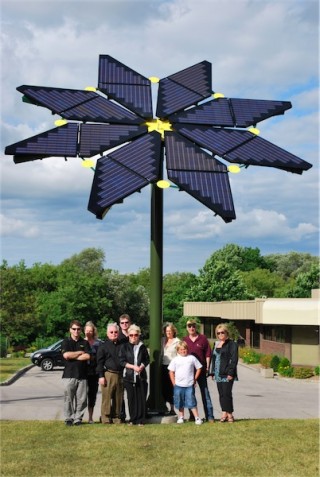When you subtract out shady roofs, renters, and other factors, only about 25% of Americans have a place to install solar power. With the high upfront cost of a complete system, the potential solar universe shrinks further.
That changes with “community solar.”
After a long wait on the state’s Public Utilities Commission to finalize the rules, Colorado’s “community solar gardens” program ( summary here) sold out in 30 minutes when it opened , testament to the pent-up demand for solar among those who don’t own a sunny roof. The program allows individuals to subscribe or buy shares in a local solar project, and in return receive a share of the electricity output.
The community solar garden policy offers several significant benefits:
- Individuals can go solar without a sunny roof or without owning one at all.
- Individuals can buy as little as a 1 kW share or as much as produces 120% of their own consumption.
- The solar garden projects capture economies of scale by building more panels at a single, central location and capture the advantages of decentralization by interconnecting to the distribution (low voltage) part of the electricity grid close to demand.
- Solar gardens cultivate a sense of ownership and geographic connection, requiring subscribers to live in the same county as their shared solar array. This can reduce political opposition to solar projects and increase local economic benefits.
Fortunately, Colorado isn’t the only state considering this policy. California’s legislature is currently debating SB 843 to allow “community shared solar” and other renewable energy. Several other states offer a blanket policy called “virtual net metering” that lets customers share the output from a single renewable energy facility, although sometimes it’s limited to certain types of customers (municipalities, residential, etc.) and we can do this in Texas.
This post was written by John Farrell and originally appeared on ILSR’s Energy Self-Reliant States blog.
Editor’s Note: California’s SB 843, mentioned in this article, failed to pass.



